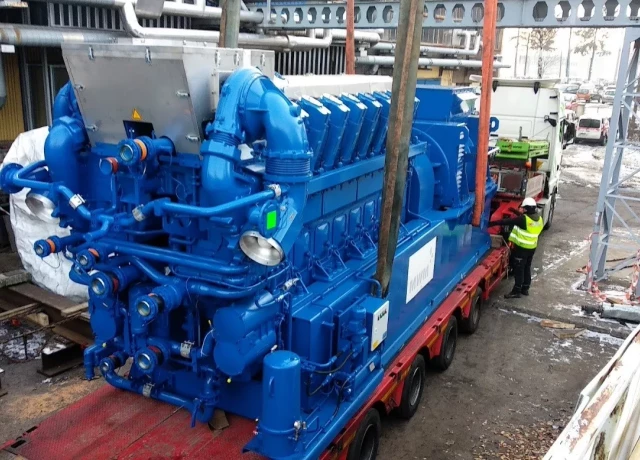In the fast-paced world of modern business, efficiency is the cornerstone of success. Organizations across the globe are constantly seeking ways to streamline their operations, reduce costs, and enhance productivity. One often-overlooked area where these improvements can be made is the mailroom. A well-managed mailroom is a crucial component of any office, and in this digital age, the need for effective mailroom management software has never been more pressing.
The Importance of Efficient Office Operations
Efficient office operations are the backbone of a successful business. They can make the difference between a smoothly running organization and one that constantly grapples with bottlenecks, lost opportunities, and frustrated employees. When internal processes are optimized, employees can focus on core tasks, creativity can flourish, and customer satisfaction can soar. Inefficiencies, on the other hand, can lead to wasted time, resources, and money.
The Role of the Mailroom in Modern Businesses
While the mailroom may not be the first thing that comes to mind when thinking about office operations, its role is pivotal. In the past, the mailroom primarily dealt with physical mail and packages. However, in today’s digital era, its responsibilities have expanded to include managing digital correspondence and packages, often in a hybrid environment. The mailroom remains the entry point for a variety of important documents and goods, such as legal documents, contracts, invoices, and even e-commerce orders.
The Need for Mailroom Management Software
As businesses grow, the volume of mail, both physical and digital, can become overwhelming. Without the right tools, managing and processing this influx can lead to chaos, errors, and inefficiencies. This is where mailroom management software steps in. It offers a digital solution to streamline, organize, and secure the mailroom operations. It helps businesses save time, reduce costs, and improve their overall operational efficiency.
Overview of What the Blog Post Will Cover
In this comprehensive guide, we’ll delve into the world of mailroom management software. We’ll explore its importance, benefits, and the features you should look for in a software solution. You’ll learn how to choose the right software for your organization, the steps to implement it successfully, and best practices for efficient mailroom management. We’ll also present real-world case studies to illustrate how businesses have benefited from mailroom management software. Finally, we’ll discuss common challenges and future trends in mailroom management.
By the end of this blog post, you’ll have a clear understanding of why efficient mailroom management is vital for your organization’s success and how the right software can transform your mailroom operations. Whether you’re a small startup or a large corporation, this guide will provide you with the knowledge to optimize your mailroom processes, enhance productivity, and ensure that nothing falls through the cracks.
Understanding Mailroom Management
In our journey towards efficient mailroom operations, it’s essential to start by understanding the fundamentals. This chapter will explore the core aspects of mailroom management, ranging from its definition to the evolution of traditional and modern mailrooms, as well as the challenges that traditional mailroom management faces.
Definition of Mailroom Management
Mailroom management encompasses all the activities and processes involved in handling, sorting, distributing, and tracking mail and packages within an organization. It’s more than just sorting envelopes and delivering packages; it’s about ensuring the right item gets to the right person in a timely and secure manner. This management is essential for maintaining a well-organized, efficient, and secure mailroom.
The Traditional Mailroom vs. Modern Mailroom
1.The Traditional Mailroom:
Traditional mailrooms, as we’ve known them for decades, dealt primarily with physical mail and packages. Incoming mail would be received, sorted manually, and then distributed to the intended recipients within the organization. This process was time-consuming and labor-intensive, often leading to delays and errors.
2. The Modern Mailroom:
In today’s digital age, mailrooms have evolved significantly. They now handle a combination of physical and digital correspondence. Modern mailroom management software automates many tasks, such as sorting and tracking, reducing human error and speeding up the distribution process. The integration of digital technologies and automation has made modern mailrooms more efficient and responsive to the needs of businesses.
Challenges in Traditional Mailroom Management
While traditional mailrooms have served their purpose for many years, they are not without their challenges:
1. Inefficiency: Traditional mailrooms often rely on manual sorting and distribution, which can be time-consuming and prone to errors. This inefficiency can lead to delays in receiving important documents and packages.
2. Lack of Visibility: Tracking the movement of mail and packages in a traditional mailroom can be challenging. This lack of visibility can result in misplaced or lost items, leading to frustration and potential security risks.
3. Resource Intensive: Traditional mailrooms require a significant workforce to manage daily operations. This can be costly, and it can also limit scalability and responsiveness to fluctuating mail volumes.
4. Security and Compliance: Ensuring the security of sensitive documents and packages is a paramount concern in traditional mailrooms. Without proper tracking and security measures, organizations may be at risk of breaches, theft, or non-compliance with regulations.
As we move forward in this guide, we will explore how modern mailroom management software addresses these challenges and transforms the mailroom into a more efficient and secure hub for both physical and digital mail. By adopting a modern approach, organizations can unlock a range of benefits that significantly improve their mailroom operations.
Benefits of Mailroom Management Software
Mailroom management software isn’t just a tool to help you organize your mail – it’s a strategic investment that can deliver a wide range of benefits to your organization. In this chapter, we will explore the four key advantages of implementing mailroom management software.
Efficiency and Productivity Improvements
1. Streamlined Processes: Mailroom management software automates and streamlines many manual tasks such as sorting, labeling, and routing. This leads to a significant reduction in the time and effort required for mail handling.
2. Faster Mail Processing: With digital tracking and automated workflows, mail and packages can be processed more quickly, reducing delivery times and improving overall operational efficiency.
3. Reduced Human Error: Automation and digital tracking significantly decrease the chances of human error, ensuring that the right items are delivered to the right recipients every time.
Cost Reduction and Resource Optimization
1. Labor Savings: Mailroom management software reduces the need for a large workforce, cutting labor costs. Fewer employees are required for manual sorting and tracking, allowing for resource allocation to more strategic tasks.
2. Lower Operational Costs: The software helps optimize resource utilization by minimizing the consumption of supplies such as paper, labels, and ink, contributing to cost reduction.
3. Better Space Management: By reducing the physical storage requirements for mail and packages, mailroom management software frees up valuable office space that can be used for other purposes.
Enhanced Security and Compliance
1. Data Encryption: Many mailroom management solutions offer encryption for digital mail and package data, ensuring that sensitive information is protected during transmission.
2. Access Control: Access to the software and the mailroom itself can be restricted to authorized personnel, enhancing security and preventing unauthorized access.
3. Compliance Tracking: Mailroom software can track compliance with industry regulations and company policies, providing an audit trail for all mail and packages.
Improved Customer and Employee Experience
1. Faster Delivery: Mailroom management software leads to quicker mail and package deliveries, improving the customer experience, especially for those awaiting important documents or goods.
2. Transparency: Employees can easily track the status of their incoming and outgoing mail, enhancing their overall experience and reducing uncertainty.
3. Reduced Mailroom Bottlenecks: Software streamlines mail processing, reducing wait times for employees and visitors, thus enhancing their experience within the organization.
Incorporating mailroom management software can have a profound impact on the overall effectiveness of your organization. Not only does it boost productivity and cut costs, but it also strengthens security, compliance, and the experience of your customers and employees. These advantages make it an essential tool for modern businesses looking to optimize their mailroom operations. In the following chapters, we will explore the features to look for when selecting mailroom management software and the steps to successfully implement it within your organization.
Conclusion
As we wrap up this comprehensive guide on mailroom management and the transformative power of mailroom management software, let’s recap the key takeaways, highlight the significant impact of this technology, and encourage you to take the next steps in streamlining your office operations.
Recap of the Importance of Mailroom Management
Mailroom management is the cornerstone of efficient office operations. Whether in a traditional or modern setting, it plays a pivotal role in ensuring the smooth flow of information, documents, and packages within your organization. Efficient mailroom management is the key to preventing delays, errors, and security breaches, while also improving the overall experience of both your customers and employees.
The Impact of Mailroom Management Software
Mailroom management software is a game-changer for businesses of all sizes and industries. It brings a host of benefits, including:
1. Efficiency: Automation, digital tracking, and streamlined processes significantly reduce the time and effort required to handle mail and packages.
2. Cost Savings: By optimizing resource allocation and reducing labor and operational costs, software ensures your organization runs lean and efficiently.
3. Security: Enhanced security features protect sensitive data and reduce the risk of breaches or unauthorized access.
4. Customer and Employee Experience: Faster mail and package delivery, improved transparency, and reduced bottlenecks all contribute to a better experience for your customers and employees.
Encouragement to Take the Next Steps in Streamlining Office Operations
Now that you have a solid understanding of mailroom management and the benefits of mailroom management software, it’s time to take action. Consider the following steps:
1. Assess Your Needs: Evaluate your organization’s specific needs and goals. What challenges does your current mailroom face, and how can software address them?
2. Budget and Vendor Selection: Determine your budget for implementing mailroom management software and select a reputable vendor that aligns with your requirements.
3. Implementation: Follow best practices for implementing the software, including staff training, system integration, and data migration.
4. Ongoing Maintenance: Regularly update and maintain the software to ensure its continued effectiveness.
5. Stay Informed: Keep an eye on emerging trends in mailroom management, such as artificial intelligence, automation, and sustainability practices.
In an era where efficiency and security are paramount, investing in mailroom management software is a strategic move that can set your organization on a path to success. By streamlining your mailroom operations, you’ll not only save time and money but also improve the overall experience for everyone involved. It’s a win-win proposition that’s well worth exploring for the betterment of your business.



